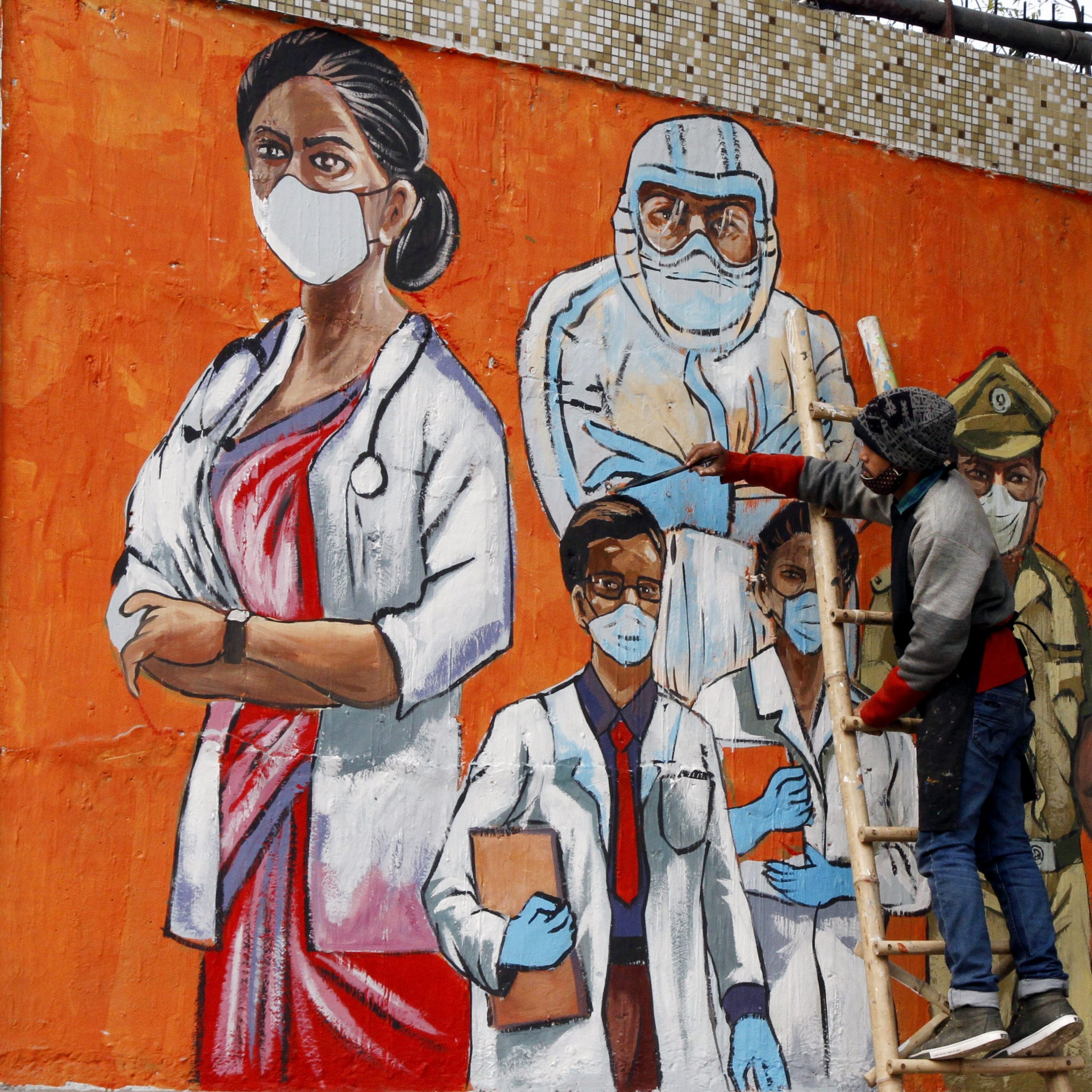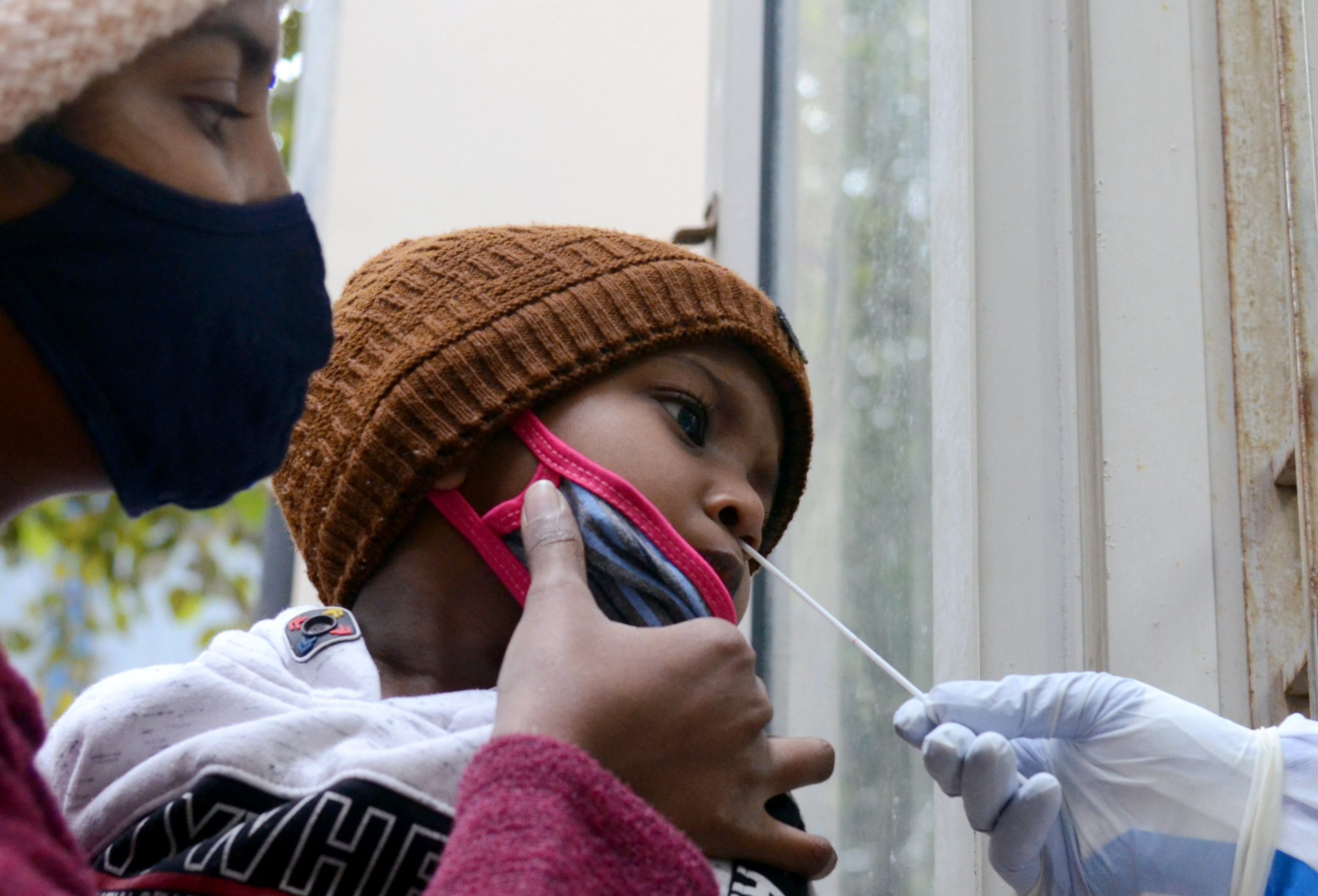A study shows a steep increase in the daily progression of Omicron cases with its preponderance in the community which was observed from 1.8% to 54%
Our Bureau
New Delhi/Mumbai
India reported 2,64,202 fresh COVID-19 cases in the last 24 hours with a positivity rate of 14.78 per cent, the Ministry of Health and Family Welfare informed on Friday.
The fresh infections in the country are 6.7 per cent higher as compared to yesterday’s figures as India reported 2,47,417 new COVID-19 cases on Thursday. Of the fresh infections added today, Maharashtra reported 46,406 new COVID-19 cases, Delhi reported 28,867 new COVID-19 cases, Karnataka reported 25,005 new COVID cases, Tamil Nadu reported 20,911 new cases, West Bengal reported 23,467 new cases, Uttar Pradesh added 14,765 fresh COVID-19 cases, Kerala reported 13,468 new cases and the rest of the cases were added by other states.
With the addition of new cases, the total cases of COVID-19 in India rose to 3,65,82,129 including 12,72,073 active cases. Active cases account for 3.48 per cent of the total cases. With 17,87,457 tests conducted in the last 24 hours, a daily positivity rate of 14.78 per cent was observed which is also slightly higher as compared to yesterday. On Thursday, the positivity rate was at 13.11 per cent.
Most of the Omicron variant infected patients of COVID-19 during the last week of December 2021 had no travel history which indicates that there was eventual community transmission, according to the study conducted by the Department of Clinical Virology, Institute of Liver and Biliary Sciences, New Delhi.

“The respiratory specimen of all RT-PCR confirmed positive cases between November 25 -December 23, 2021, collected from five districts of Delhi were subjected to whole-genome sequencing. Complete demographic and clinical details were also recorded. Hence, we analyzed the formation of local and familial clusters and eventual community transmission,” the study noted. The study also states that around 60.9 per cent of COVID-19 infected people showed a community spread.
The study shows a steep increase in the daily progression of Omicron cases with its preponderance in the community which was observed from 1.8 per cent to 54 per cent.
As per the interpretation of the study, this is among the first from India to provide the evidence of community transmission of Omicron of coronavirus infection with significantly increased breakthrough infections, decreased hospitalization rates, and a lower rate of symptomatic infections among individuals with high seropositivity against SARS-CoV-2 infections.
As India reports COVID-19 infection in children like other countries, considering the importance of the topic, an interactive webinar session on ‘Managing Children with Covid-19’ is being organized by the Union Health Ministry in collaboration with All India institute of medical sciences (AIIMS) Delhi, with regional and state center of excellence and Indian Medical Association on Thursday.
“Omicron does affect the children but it is a mild disease. So, we also need to keep in mind that the fear and the panic which is getting created among the families, we must be able to curtail it,” said Dr Prof Ashok Deorari, AIIMS, Delhi.
Dr Rakesh Lodha, Head, Professor, Pediatric Intensive Care Unit, AIIMS, Delhi, who was the speaker during the webinar, further explained by showing the data about the infection rate in children but more data is still required.
He also explained the reason behind children getting affected by COVID in comparison to adults and the elderly population.
“The Omicron is clearly more contagious and against the values of R nought, which kind of gives an idea about how contagious it is, how easily it can spread. Various groups have estimated it to be much higher than what was there for delta and for the original virus. It’s believed to be more than seven, some groups have estimated even to be close to 10 or more than 10. And in that scenario, it comes close to measles which is a highly contagious disease that we see children.”
During the webinar, the team of experts also suggested that in terms of the diagnostics to detect COVID remains the same.
The panel of doctors also discussed and explained the clinical features of Covid19, Omicron clinical features, Omicron versus Delta and its effects on Children and risk factors for severe diseases due to Omicron.


























